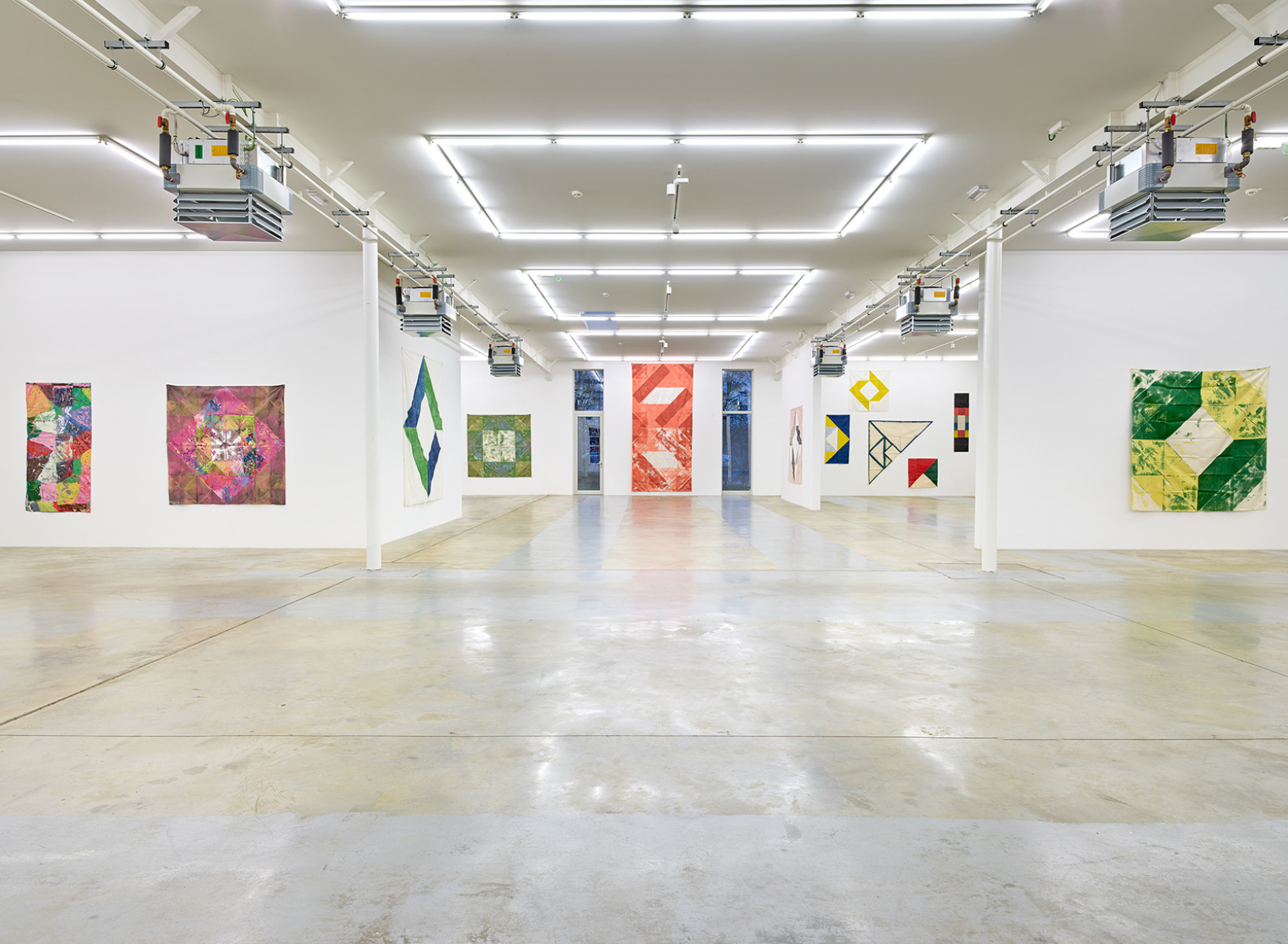André-Pierre Arnal
Works from 1964 to 2020
December 12, 2020 - January 30, 2021
André-Pierre Arnal
Works from 1964 to 2020
December 12, 2020 - January 30, 2021
André-Pierre Arnal has since childhood been opening his eyes to the theatre of the world. Perhaps the discovery at a very young age of the forces that are exerted there, visible or invisible, in the colour of the southern skies and the black of sleepless nights, seen through this journey of a lifetime, suggest something of this painted theatricality, this poetic writing, an assumed dry lyricism, apparent in his painting in its very questioning, in the various material operations, the folding, unfolding and tearing. A musical theatricality too, for those able to hear the silent noise of the tectonic plates and the shamanic breath, the shouting language of colour and the singing deposited with the pigment on the walls of Lascaux. A long enough journey today for pictorial developments to appear, some “Bach’s variations” as Gérard-Gorges Lemaire used to say in this respect, since the childish folding of paper pots, the first Monotypes of the 60s, the series of folds on canvas that brought him closer to the Supports/Surfaces group in the 70s, and up to the tearing, crumpling, assembling and all that polychromy offers of sinuous and wild detours in his work from the 80s; his research into different supports, from school slates to geographical maps and the unlimited possibilities of paper in his recent work. One has to have met him in his studio to understand what he says about this journey: “Everything I have painted astonishes me. I look at the progressive inventory of a confused universe yet one that is very close to me; this vast moving chaos of which I am the temporary tenant”. His is a studio where the light falls on a succession of strata of life, in the midst of African masks and books, a jumble of written or painted sentences that have always seemed to me to be phrases of silent insolence. For it is indeed the body that expresses itself in this dialogue with the support that he handles, folds and crumples, these papers that he tears, glues and superimposes, an action that is expressed with enough humility not to make one believe that the material could be submitted since it remains doomed to the randomness of his tearings, open to surprise. The painter simply allows this to organise itself; he is the director of an almost ritualistic, quasi shamanic process, which allows the release of energies and silent currents of perception. Then thanks to the protocol applied, the colours mix and create a form that questions the gaze and the unconscious, playing with the skin of the material in a random way, with its stiff and rigid surfaces and those surfaces lightened by dilutions and impregnations that have used porosity and permeability to free themselves in drips, in almost liquid glazes that play with transparency. But in this overflow of forms and colours of his recent works, there is the same presence of a void and of a silent language that we discover in his works of the 70s, with those unpainted areas where only the square marks of the folding remain, like empty presences that accentuate the materiality of the support. These same traces of folds that have passed through the history of art: they are on the tablecloth of Leonardo da Vinci’s Last Supper, on the canopy above Piero della Francesca’s Madonna del Parto and the apron of Hantaï's mother, which he never ceased to seek out in his series of Tabula. Folds that invite the gaze to a third dimension, when on the wall the canvases “conform to the rite of hanging on the wall”, as Christian Prigent says in a 1976 text, and thus become their own wall. This permanent dialogue between empty and full shows all the possible states of painting, like that of writing, where we discern Arnal’s admiration for Blanchot, and in front of each empty canvas or each sheet of paper he is aware of the coming struggle between the virginal and the smeared. This is the great struggle of his career, the work of folding and crumpling linked to that of colour, then with the unfolding and unveiling, the possibility of voids. Yes, Arnal folds the canvas on the ground, folds it again, puts colour on parts of it in a fragmentary vision, a breathing of the earth, a music played without a score; for him it is a blind work in the sense that nothing can yet be guessed of the whole, before the epiphany of unfolding or tearing out and the dazzling whole on the wall. Then colour becomes a storm. Light comes. A form of prophetic violence that harks back in the folds of childhood to the time when God spoke through the mouth of his father. In the studio the piles of canvases are there, folded and stacked behind a curtain, but everything rumbles. Everything is ready to start all over again. The theatricality is not far away.
Bernard Collet
2020, November 17
2020, November 17


















